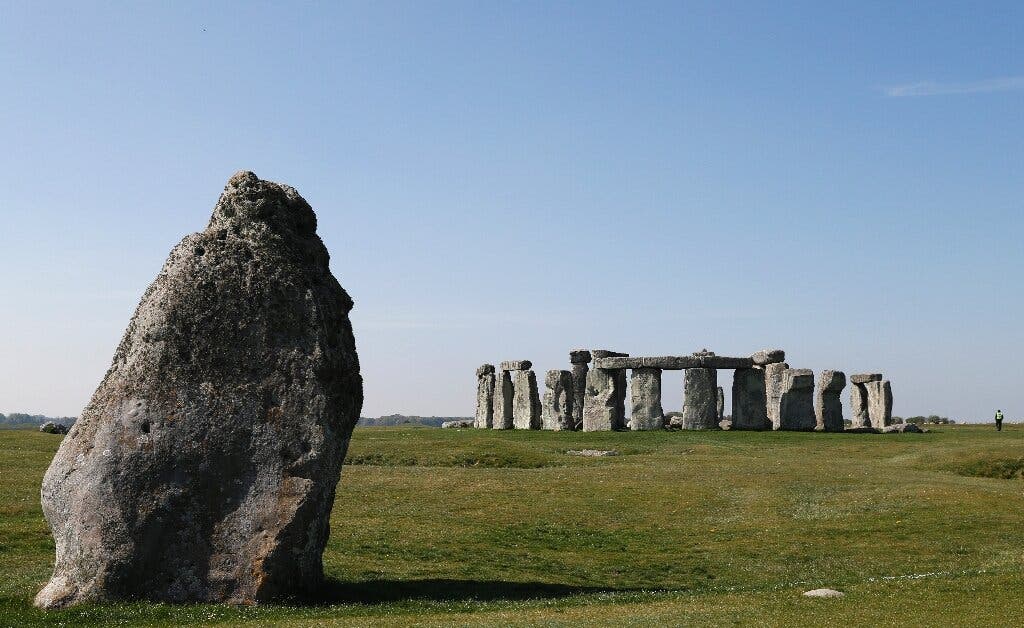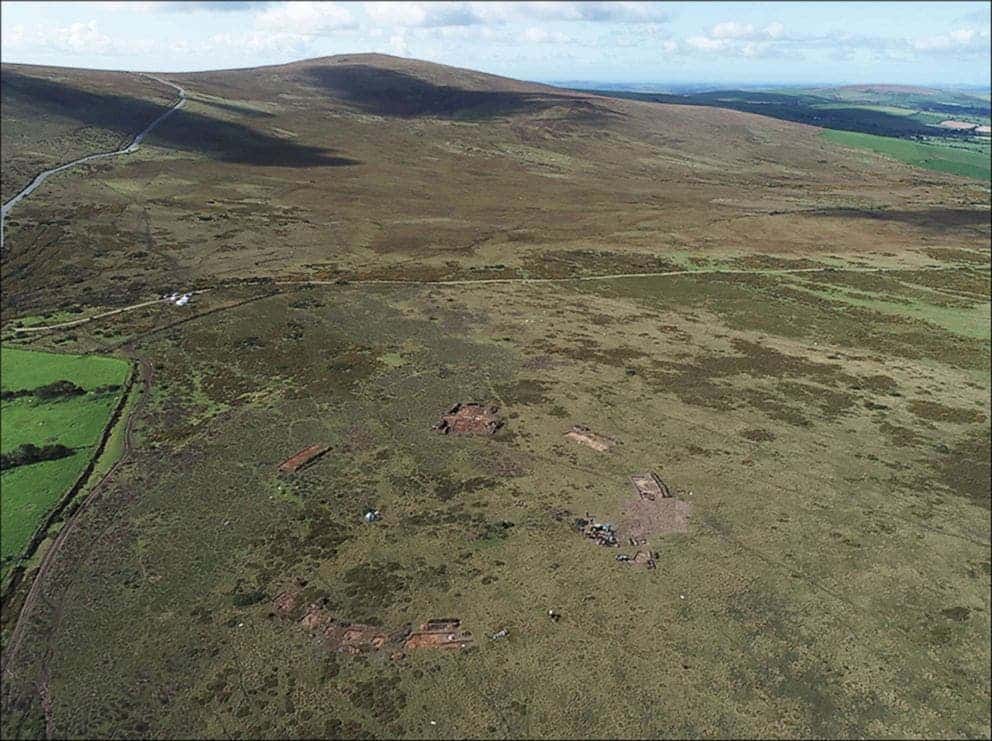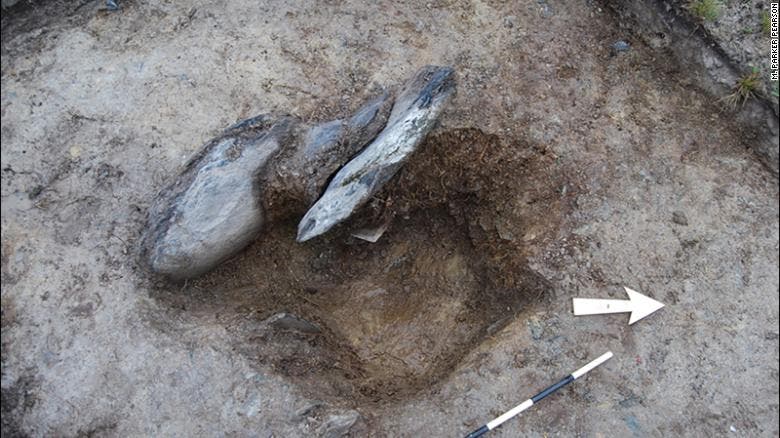You’re a prehistoric builder. You look at these magnificent rocks used to build Stonehenge and you think “You know what would be even cooler? If we moved them a few hundred miles away”. While we can’t say exactly what went through the mind of these ancient builders, but modern research has revealed convincing evidence that parts of Stonehenge were constructed using rocks dragged from a different monument in modern day Wales.

Built some 4,600 years ago, Stonehenge has fascinated historians and artists alike for centuries. We know, from previous research, that it was a bustling spiritual center, and must have held a huge significance for the society that built it. But scientists are also learning more things about it every year, including where it originally came from.
The first clue about Stonehenge’s origin comes from geology. The monument is constructed from a type of bluestone — a specific type of rock that is only found in Wales, not where Stonehenge currently lies. This has been suggested by researchers several times but it was conclusively demonstrated by several recent studies. In 2015, one such study revealed that the bluestones were extracted from quarries in the Preseli hills, some 280 kilometres (180 miles) away in west Wales. In 2019, researchers zoomed in even more, finding two specific quarries where the bluestones would have been extracted from.
Now, researchers have found another tantalizing piece of evidence suggesting that not only were the 43 giant bluestones moved over a whopping 150 miles — but they were removed from another dismantled monument. In other words, what’s possibly the most iconic monument in the world may be a second-hand creation.
A needle in a bluestone haystack
The discovery came when researchers analyzed the remains of another stone circle called Waun Mawn. Waun Mawn is one of the oldest stone circles in Britain and the country’s third largest. It has a diameter of 360 feet (110 metres) — the same as the ditch that encloses Stonehenge — and, like Stonehenge, is aligned to the midsummer solstice sunrise. It’s also a stone’s throw away from the bluestone quarries.

Archaeologists had been looking for this type of sister site to Stonehenge for a few years, but they discarded Waun Mawn because the preliminary surveys didn’t really show anything of interest.
In modern archaeology, researchers deploy remote surveys to “see” beneath the ground. These geophysical methods aren’t perfect, but they usually offer a good indication of where archaeologists should dig to find the most interesting things. For some unclear reason, the geophysical surveys at Waun Mawn didn’t find anything. But after ruling out other possible candidate sites, the archaeologists decided to dig anyway.
It was a grueling task that involved many days spent in cold, wind, and rain — but it was worth it.
“It was hard work over eight years with a big team and we hit many dead ends,” said study author Parker Pearson for ABC. “We had to start by excavating the bluestone quarries, then doing geophysical surveys across rough terrain, excavating possible sites, finding out that none of these were what we were searching for, and finally going back to a site we had discounted.”
“So, going back to it and finding out we should have stuck with it from the very beginning was certainly a surprise,” he added. “But the years in between weren’t wasted because we really get to know the landscape and to cross off all the other likely possibilities.”
Although they haven’t found completely irrefutable evidence, everything about what archaeologists found at Waun Mawn seems to suggest a connection to Stonehenge. It’s not just the size and geometry of the site that fits, it’s also the time: Waun Mawn stone circle was created somewhere after 3600 BC, a few hundred years before the first stages of construction at Stonehenge. The type of rocks also fits — it’s the same type of bluestone in the two monuments. Furthermore, one of the rocks at the site has an unusual pentagonal shape, just like the rocks seen in Stonehenge, and the rock chippings are also similar.

Building (and moving) the first Stonehenge
So why did they do it? Why did they go through this gargantuan task of carrying dozens of giant megaliths across the country? We’re not exactly sure.
The area around Waun Mawn thrived until some 5,000 years, when activity in the area seems to have completely stopped.
This begs two questions: first, what happened to these people, why did they migrate to different areas — and perhaps more importantly, why did they take the huge stones with them?
“It’s as if they just vanished. Maybe most of the people migrated, taking their stones—their ancestral identities—with them,” archaeologist Mike Parker Pearson, from UCL, said.
Moving three-ton bluestones 180 miles to Salisbury Plain, where Stonehenge currently lies, must have been a mammoth task, so why did they do it? At this point in the research, it’s not clear why they did it, but the rocks themselves must have been extremely important, “considered as not just valuables, but the very essence of who they were,” notes Pearson.
Not all researchers are convinced by this theory, and it’s up to upcoming research to prove whether this proto-Stonehenge was indeed built and dismantled in Wales and then transported to Salisbury. Further excavations are already underway.
Myth meets reality
The study is also notable because it seems to be linked with a piece of myth. In a 12th century book, the Welsh cleric Geoffrey of Monmouth wrote the story that the mythical wizard Merlin was enlisted to lead an army to Ireland and transport a ring of giganting mystical stones to what is believed to be Salisbury Plain.
We now know this to be nothing more than pseudohistory or myth, but this new find seems to suggest a kernel of truth to this legend — it may have not been Ireland but Wales, and it wasn’t magic that transported the rocks but hard work and clever engineering, but it seems like a kernel of truth nonetheless, and one of the rare instances where myth and reality actually intertwine.
In addition to the monument itself, the large-scale migration also raises some intriguing questions. The people who were buried at Stonehenge also appear to have originated from West Wales, as genetic analyses have shown, so the signs of a mass migration are there — which means there may have been other megalith sites waiting to be discovered.
“My guess is that Waun Mawn was not the only stone circle that contributed to Stonehenge,” said Parker Pearson in a news statement.
Journal Reference: Mike Parker Pearson et al. The original Stonehenge? A dismantled stone circle in the Preseli Hills of west Wales, Antiquity (2021). DOI: 10.15184/aqy.2020.239 , doi.org/10.15184/aqy.2020.239


